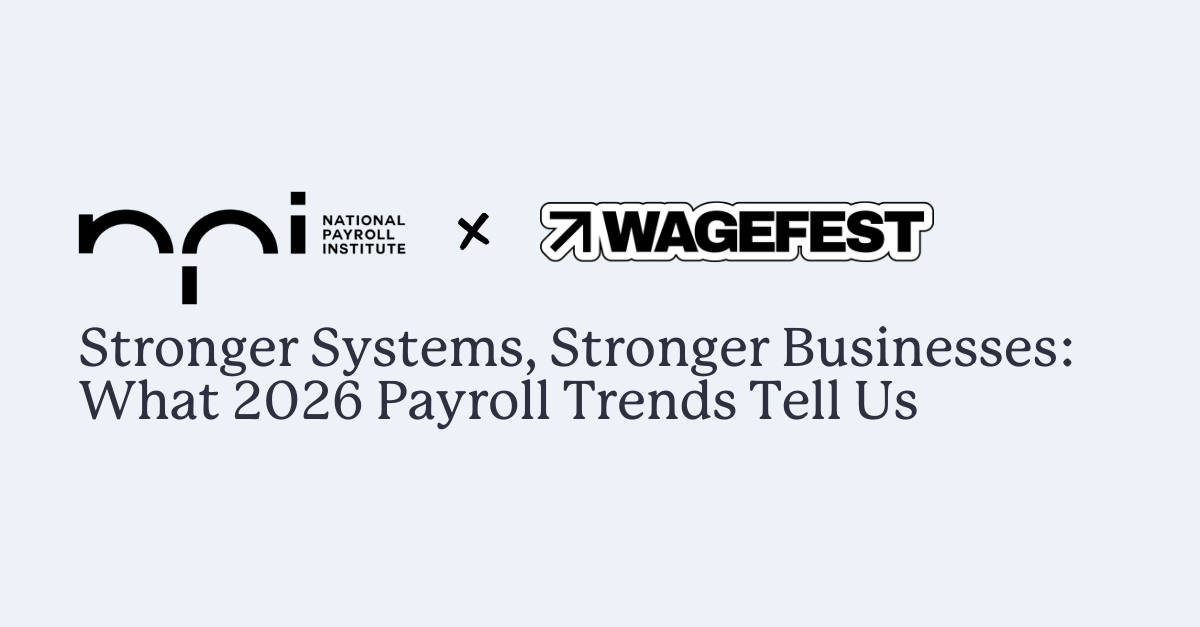Become an insider!
Get our latest payroll and small business articles sent straight to your inbox.
Payroll is a non-negotiable aspect of doing business — it’s also one that you can’t mess up. You’re not only dealing with the livelihood of your employees, but the Canada Revenue Agency (CRA) is pretty unforgiving when it comes to payroll errors. So how can you streamline payroll to optimize processes and pave the way to success for your small businesses in Canada?
Streamlining basics: Understanding the payroll ledger.
Let’s start with a basic definition so that we’re all talking about the same thing. A payroll ledger is a record-keeping tool used by businesses to track and summarize all of the financial transactions related to employee compensation. It serves as a central record-keeping system ensuring that you’re accurately and efficiently managing your payroll.
If done correctly, it can be a magical system that will save you hours of time and help you be headache-free. If not done correctly, then you may want to stock up on your Advil.
In a manual payroll ledger, each employee would be given their own page. You’d not only capture basic details like their name, Social Insurance Number (SIN), position and compensation rate, but also specific details about each and every payroll on which they’re compensated. It’s basically the who, what, when and why of paying that employee.
And of course, anytime you make any changes, like give the employee a raise or change their position, it all gets documented within this same ledger. It’s like a living, breathing organism.
Some businesses keep this magical system alive through the use of pen and paper, while others rely on fancy spreadsheets or technology and payroll software. The choice of method depends upon the size and complexity of your payroll operations, as well as the available resources and technology. I’m sure you’re not surprised to read that we very firmly sit on the side of technology. 🙂
Best practices to keep in mind while streamlining payroll.
While it is a necessity, keeping up with a payroll ledger doesn’t have to be complicated. There are tools available to help ease the process and general best practices to follow that can streamline that process and prevent payroll from being a thorn in your side. We’ve listed a couple that we feel are most important.
Prioritize privacy and security for your payroll
First and foremost, payroll security is a must.
You’ve undoubtedly seen the numerous breaches of security in the news. Employees’ and contractors’ personal details should be kept confidential to maintain privacy and protect their sensitive information like social insurance numbers and banking information. Failing to do so could have long-term effects on their credit as well as their personal lives. As for your business, it could greatly impact your reputation as a professional company and throw a wrench in your ability to attract and maintain top talent.
Security measures such as routinely changing passwords, introducing two-factor authentication and utilizing cloud-based storage systems can significantly increase your payroll security and keep that sensitive information safe and secure. Don’t become that next news headline!
Track the important payroll dates and deadlines
The CRA is unforgiving with penalties when it comes to payroll tax deductions. In order to avoid late penalty charges and incurring any additional interest charges from CRA, an effective payroll system should include all relevant dates and deadlines. This includes things like due dates for remitting payroll taxes and due dates for filing and paying Workers’ Compensation or Employer Health Tax (EHT) remittances.
One simple way to keep track of these important dates is to use a payroll ledger template which you can then customize to the particular needs of your business. Alternatively, you can build a payroll calendar in the spreadsheet software of your choice.
Another way you can streamline payroll processes like these is to set the source deductions on auto-pilot by using a payroll processing program like Wagepoint that’ll remit everything for you. Then, all you have are some quarterly or annual returns to file.
Review the year ahead
Intentionally schedule time in your calendar to sit down and review the upcoming year’s schedule and determine if there are any conflicts in dates or processing to be aware of. This includes things like statutory holidays when banks are closed and payroll providers may require an earlier submission of hours. Be sure to notify the necessary managers and employees of those altered submission requirements well in advance.
You can find a complete list of public holidays recognized by the CRA here. Wagepoint has also created a comprehensive Canadian Small Business Payroll Calendar to inform you of important dates to look out for.
Use direct deposit for employees
Encourage your employees to opt for direct deposit instead of receiving physical paper cheques. Direct deposit eliminates the need for printing and distributing pay cheques, and reduces administrative tasks and costs. You’ll probably be surprised to learn that it’s estimated to cost between four and 20 dollars to issue a cheque in a small business today. So this is probably the easiest way to save your business some money!
Implement payroll software
Consider investing in payroll software specifically designed for small businesses. Not only can it automate various payroll processes, such as calculating wages, taxes and deductions, it can also generate pay stubs and handle source deduction remittances.
Some payroll software like Wagepoint, can also integrate directly with your accounting software. An example is QuickBooks Online (QBO), where you can further streamline payroll processes by integrating QBO with Wagepoint’s payroll data. These integration settings can be easily customized based on your needs and wants.
QuickBooks is an invaluable tool for you as a small business owner that offers limitless potential. Consider investing in QuickBooks training and support from industry experts to equip you and your team with the knowledge you need to make the most of that potential.
Here are some quick tips that can help you to reap the full benefits when you choose QBO and Wagepoint as your magical payroll combination:
Take advantage of time tracking options
When you use QBO Time or Time by Wagepoint, employees can input their hours into the software for either your manager and yourself to later approve. These hours can be reviewed from anywhere, so you’re no longer tied to your desk or office. You could even approve payroll hours from the beach!
Once you’ve given the go-ahead, you can easily port the hours into Wagepoint to automatically input the total number of hours for each employee within the designated payroll period. Voilà! Many keystrokes (and potential human errors) are eliminated.
Benefit from automatic pay runs
This has to be our favorite Wagepoint feature. When you have salaried employees with consistent earnings, those employees can be set to auto-run in your payroll software. Yes, that’s what we said — auto-run.
Set up the payroll once and then it runs automatically while you are busy running your business or sitting on that beach. It reduces time, hassle and, ultimately, brain power. More importantly, it ensures that employees are paid correctly and on time, without a second thought.
Streamlining payroll starts now.
As you can see, there are numerous tools and techniques at your disposal as a small business owner to help the payroll process run smoothly. By optimizing and streamlining this aspect of your business, or by utilizing a professional service, you can rest assured that your payroll is covered.
You’ll also know your payroll ledger is accurately feeding into your financial information so you can be confident in your company’s financials and focus on doing what it is that you do best.
Maybe, after reading this article, you’ve decided, “What the heck! I don’t want to do this anymore!” We are here to help! AIS Solutions serves small businesses across Canada to provide specialized bookkeeping, payroll and accounting services, as well as resources and training. We’d be happy to help you to leverage and streamline payroll to propel your business forward.











